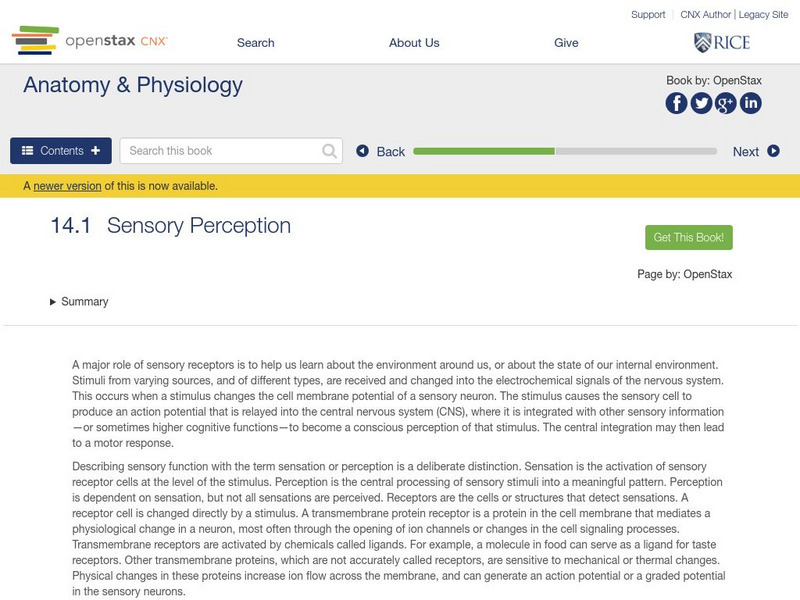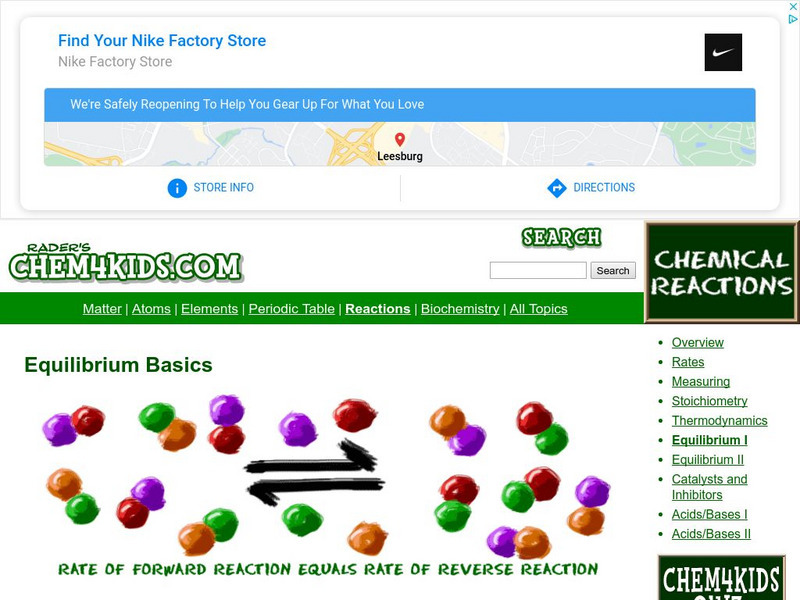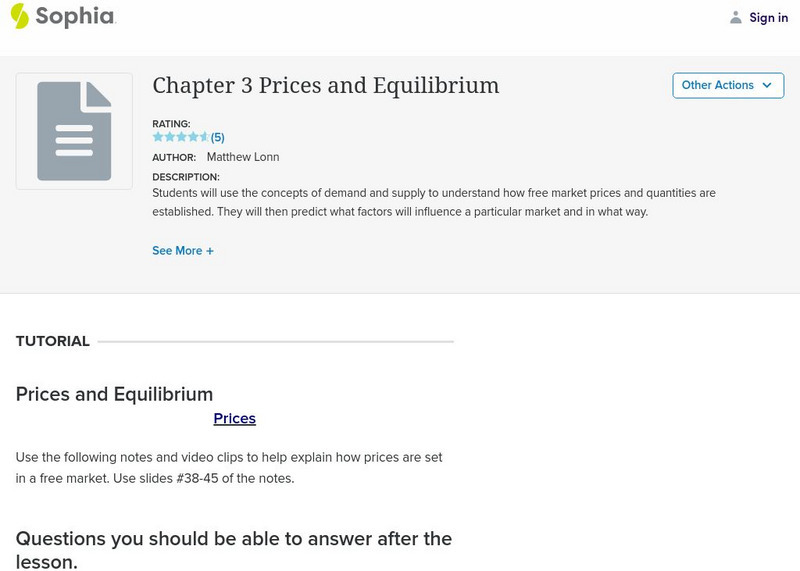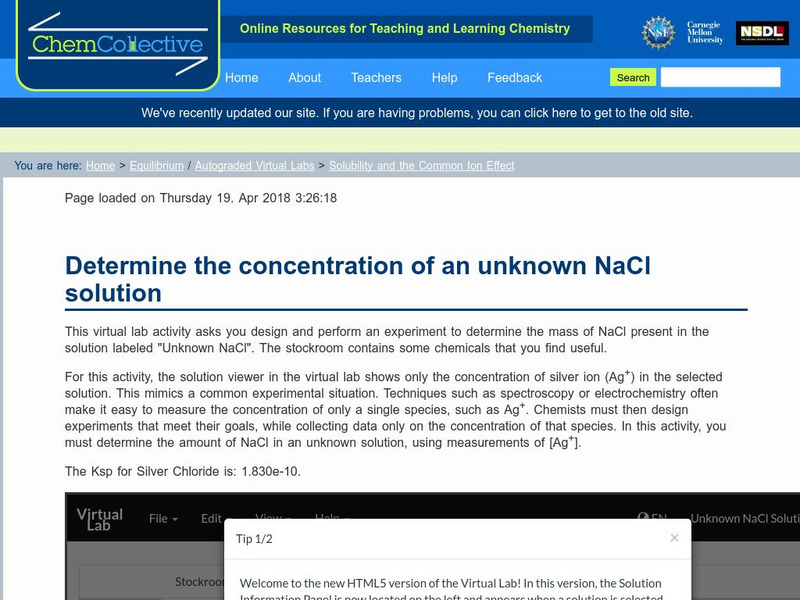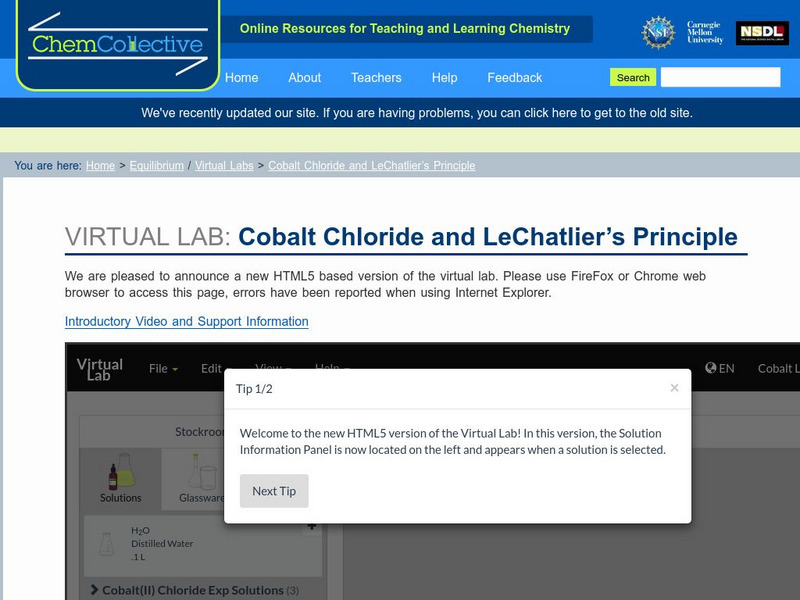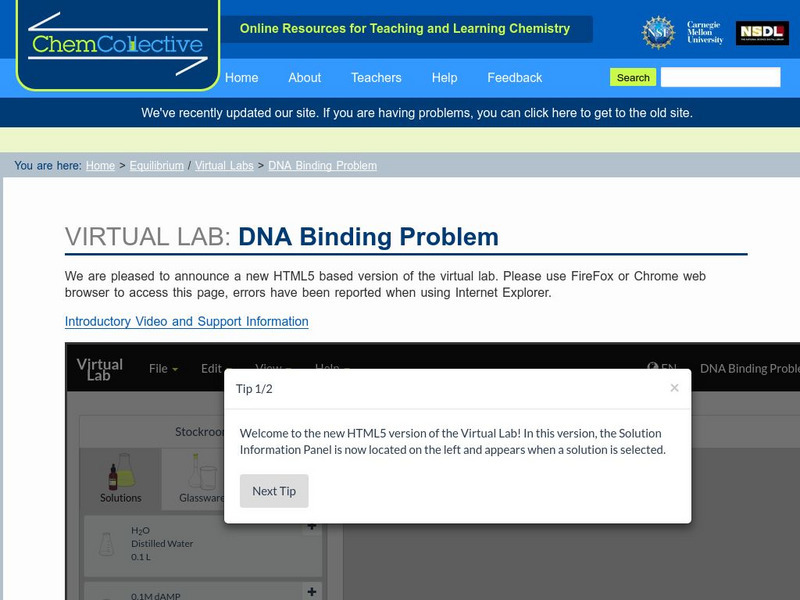Georgia Department of Education
Ga Virtual Learning: Ap Chemistry: Acid Base and Solution Equilibrium
Through a variety of activities, students learn that not all acid and base reactions go to completion, and instead, they establish equilibrium. Acid-base equilibrium expressions have their own constants, ka and kb. Students will perform...
Georgia Department of Education
Ga Virtual Learning: Ap Physics 1: Newton's Laws of Motion
Newton's three laws are deceptively simple, but they are the underpinning of all of physics and govern the mechanics all of your actions in everyday life. Take an in-depth look at these laws in this learning module.
Khan Academy
Khan Academy: Calculating Equilibrium Constant Kp Using Partial Pressures
A thorough reference providing the definition of equilibrium constant Kp for gas phase reactions, and how to calculate Kp from Kc.
OpenStax
Open Stax: Forces and Torques in Muscles and Joints
From a chapter on Statics and Torque in a Physics textbook. This section of the chapter provides an in-depth discussion of forces and torque in the human body. We learn about muscular force, the importance of posture in preventing back...
OpenStax
Open Stax: Anatomy & Physiology: Sensory Perception
Learn the different types of sensory receptors, and describe the structures responsible for the special senses of taste, smell, hearing, balance, and vision.
OpenStax
Open Stax: Applications of Statics, Including Problem Solving Strategies
From a chapter on Statics and Torque in a Physics textbook. This section of the chapter discusses how statics can be applied in the real world, and strategies for solving statics problems. Includes a question, two exercises, and a...
OpenStax
Open Stax: The First Condition for Equilibrium
From a chapter on Statics and Torque in a Physics textbook. This section of the chapter discusses what the first condition for equilibrium is, and describes what static and dynamic equilibrium are. Includes two questions and a...
OpenStax
Open Stax: The Second Condition for Equilibrium
From a chapter on Statics and Torque in a Physics textbook. This section of the chapter discusses what the second condition for equilibrium is, and explains what torque is and its role in rotational mechanics. Includes questions,...
OpenStax
Open Stax: Stability
From a chapter on Statics and Torque in a Physics textbook. This section of the chapter discusses the types of equilibrium, and describes stable, unstable, and neutral equilibriums. Includes questions, problems and exercises.
TeachEngineering
Teach Engineering: Sum It Up: An Introduction to Static Equilibrium
Students are introduced to static equilibrium by learning how forces and torques are balanced in a well-designed engineering structure. A tower crane is presented as a simplified two-dimensional case. Using Popsicle sticks and hot glue,...
TeachEngineering
Teach Engineering: Build Your Own Mobile
Students creatively construct mobiles to balance oddly shaped objects while learning about the concept of the center of mass.
Texas Education Agency
Texas Gateway: Biological Systems: Homeostasis
Study the process of by which humans respond to their environment to reach equilibrium in this tutorial. Learn that feedback mechanisms trigger living things to respond to their environment.
Chem4kids
Chem4 Kids: Equilibrium Basics
This Chem4Kids.com site explains what equilibrium is in easy-to-understand language. Content includes a great example, as well as exploring different things which effect the position of equilibrium.
Sophia Learning
Sophia: Prices and Equilibrium
Through a series of resources, students use the concept of demand and supply to explain how free market prices and quantities are established, define equilibrium, and understand the idea of shortage and surplus.
Sophia Learning
Sophia: Science Lessons and Interactives: Solubility Equilibrium
Created to teach students of the 21st century, SOPHIA is bringing the solubility straight to your fingertips. Become the commander of your own learning experiences as you take part in this interactive lesson.
Chemistry Collective
Chem Collective: Solubility and the Common Ion Effect
Determine the concentration of an unknown NaCl solution using the common ion effect.
Chemistry Collective
Chem Collective: Metal Ligand Binding
Use silver chloride to determine the binding constant for a metal ligand complex.
Chemistry Collective
Chem Collective: Equilibrium Simulation
This applet is similar to the stoichiometry simulation but applies to chemical reactions that do not go to completion. The calculation of the equilibrium state of such reactions is typically covered months after students learn how to...
Chemistry Collective
Chem Collective: Acclimatization on Mt. Everest
To get to the top of the mountain before winter arrives, students must derive an equation that relates the necessary amount of hemoglobin to the partial pressure of oxygen at the current and next camp.
Chemistry Collective
Chem Collective: Cobalt Chloride and Le Chatlier's Principle
In this activity, students safely explore the equilibrium reaction of the cobalt chloride reaction.
Chemistry Collective
Chem Collective: Dna Binding Problem
In this activity, students explore equilibrium constants in biochemical systems by measuring the binding constant of a DNA-Dye reaction.
Simon Fraser University
Chem1 Virtual Textbook: Le Chatelier's Principle
Acting as an overview from the General Chemistry Virtual Textbook, this site provides an overview of information related to Le Chatelier's Principle. Various topics covered include the le Chatelier Principle and physiology, how changes...
Physics Classroom
The Physics Classroom: Determining the Net Force
Online classroom site explaining the concept of balanced and unbalanced forces. The site has examples and exercises for the student to review and try.
Georgia Department of Education
Ga Virtual Learning: Rotational Motion
Students learn about rotational motion, and the connection between torque and power. Activities include informational text, interactive activities, practice problems, online labs, and virtual animations.






